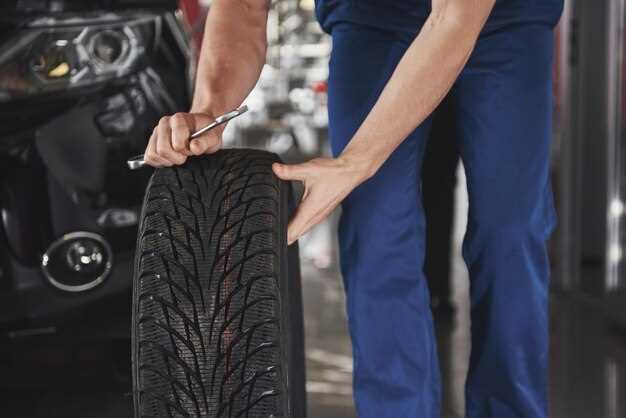Why tire rotation is important for your car

Regular maintenance is crucial for ensuring the longevity and performance of your vehicle. One of the key aspects of this maintenance is tire rotation, a procedure that often goes unnoticed but plays a significant role in extending the life of your tires and overall vehicle. Tire rotation refers to the practice of moving your tires from one position on the vehicle to another, which helps to ensure even wear and maximize their lifespan.
The importance of tire rotation cannot be overstated. Tires wear unevenly due to factors such as weight distribution, driving habits, and road conditions. By routinely rotating your tires, you promote a more balanced wear pattern, which not only prolongs the life of your tires but also enhances the safety and performance of your vehicle. This simple yet effective maintenance task can lead to better handling, improved fuel efficiency, and decreased chances of tire blowouts.
Many vehicle manufacturers recommend a specific tire rotation schedule, usually every 5,000 to 8,000 miles. Sticking to this schedule can prevent premature tire wear and save you money in the long run. Embracing the practice of regular tire rotation not only signals responsible vehicle ownership but also reflects a commitment to maintaining your car’s overall efficiency and reliability.
How Regular Tire Rotation Enhances Tire Life and Performance

Regular tire rotation is a crucial maintenance task that significantly affects both the longevity and performance of your tires. During everyday driving, tires experience uneven wear due to variations in weight distribution, driving habits, and road conditions. This uneven wear can lead to several issues, including reduced grip, increased noise, and compromised safety.
By implementing a consistent tire rotation schedule, typically every 5,000 to 7,500 miles, you help distribute the wear more evenly across all tires. This practice not only extends the life of the tires but also enhances their overall performance. Evenly worn tires provide better traction and more predictable handling, which are essential for safe driving.
Moreover, a proper rotation strategy can help maintain balanced vehicle dynamics. When one or more tires wear down faster than others, it can lead to misalignment and additional strain on the suspension system. Regularly rotating your tires minimizes these risks, allowing your vehicle to perform optimally.
In summary, prioritizing regular tire rotation results in prolonged tire life and improved vehicle performance, making it a simple yet effective way to ensure a safer driving experience.
The Role of Tire Rotation in Ensuring Vehicle Safety

Tire rotation is a crucial maintenance practice that significantly enhances vehicle safety. By regularly changing the position of tires on a vehicle, drivers can ensure that each tire wears evenly. Uneven tire wear can lead to compromised traction, increasing the risk of skidding, loss of control, or blowouts, particularly in adverse weather conditions.
Additionally, tires play a vital role in the vehicle’s braking and handling capabilities. Proper rotation ensures that all tires maintain optimal grip on the road, which is essential for effective braking distances. When tires are worn unevenly, the performance of the vehicle can diminish, affecting the driver’s ability to maneuver safely.
Furthermore, tire rotation can positively impact the vehicle’s alignment and suspension components. Uneven tire wear can lead to disturbances in vehicle alignment, which not only affects tire life but also poses safety risks. Alignment issues can lead to unpredictable vehicle behavior, particularly during cornering and emergency braking situations.
In summary, tire rotation is not just a routine maintenance task; it is a critical element in ensuring vehicle safety. By promoting even tire wear and enhancing performance, tire rotation contributes to better handling, effective braking, and overall driving stability, making it an indispensable aspect of responsible vehicle ownership.
Best Practices for Scheduling and Performing Tire Rotation
Regular tire rotation is crucial for maintaining the performance and longevity of your vehicle. To ensure that you are effectively managing this essential maintenance task, consider the following best practices:
- Check Manufacturer Recommendations:
- Consult your vehicle’s owner manual for the recommended tire rotation schedule.
- Most manufacturers suggest rotating tires every 5,000 to 7,500 miles.
- Establish a Routine:
- Create a maintenance schedule that includes tire rotation as part of regular service.
- Align tire rotation with other routine services, such as oil changes, to simplify vehicle maintenance.
- Monitor Tire Wear:
- Regularly inspect tires for uneven wear patterns.
- Adjust rotation frequency if any tires show excessive wear, as this may indicate alignment or suspension issues.
- Know the Rotation Patterns:
- Familiarize yourself with appropriate rotation patterns, such as front-to-back or crisscross, based on your tire type and vehicle configuration.
- Follow manufacturer guidelines for specific rotation patterns to ensure optimal performance.
- Perform Visual Inspections:
- Inspect tires for damage and debris before and after rotation.
- Check tire pressure and adjust as needed during the rotation process.
- Utilize Professional Services:
- Consider having tire rotation performed by a qualified technician who can identify additional vehicle maintenance needs.
- Professional services can provide precise alignment adjustments if required.
By implementing these best practices for scheduling and performing tire rotation, you can enhance your vehicle’s safety and extend the life of your tires.

